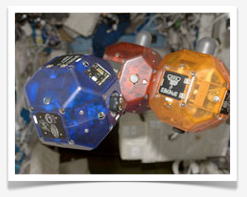Tag: NASA Mission Update
Get Ready for the Launch of the Curiosity Rover
 The Curiosity rover is scheduled for launch to Mars on Nov. 25, 2011. To prepare for the launch, a telecon has been scheduled so you can hear about the many resources available for you to share the excitement of launch with your students. Topics during the telecon are:
The Curiosity rover is scheduled for launch to Mars on Nov. 25, 2011. To prepare for the launch, a telecon has been scheduled so you can hear about the many resources available for you to share the excitement of launch with your students. Topics during the telecon are:LRO Offers Sunrise View of Crater Tycho's Peak
 On June 10, 2011, NASA’s Lunar Reconnaissance Orbiter spacecraft pointed the LRO narrow angle cameras to capture a dramatic sunrise view of Tycho crater.
On June 10, 2011, NASA’s Lunar Reconnaissance Orbiter spacecraft pointed the LRO narrow angle cameras to capture a dramatic sunrise view of Tycho crater.A very popular target with amateur astronomers, Tycho is located at 43.37°S, 348.68°E, and is about 82 kilometers (51 miles) in diameter. The summit of the central peak (shown at left) is 2 kilometers (1.24 miles) above the crater floor. The distance from Tycho’s floor to its rim is about 4.7 kilometers (2.92 miles).
Link to the NASA Explorer Schools Virtual Campus home page.
Kepler Discovers a Planet with Two Suns
 The existence of a world with a double sunset, as portrayed in the film Star Wars more than 30 years ago, is now scientific fact. NASA’s Kepler mission has made the first unambiguous detection of a circumbinary planet — a planet orbiting two stars — 200 light-years from Earth.
The existence of a world with a double sunset, as portrayed in the film Star Wars more than 30 years ago, is now scientific fact. NASA’s Kepler mission has made the first unambiguous detection of a circumbinary planet — a planet orbiting two stars — 200 light-years from Earth.
Herschel Telescope Detects Oxygen Molecules in Space
 Detectors on the Herschel Space Observatory’s large telescope have provided the first confirmation of oxygen molecules in space. The molecules were detected within the Orion Nebula.
Detectors on the Herschel Space Observatory’s large telescope have provided the first confirmation of oxygen molecules in space. The molecules were detected within the Orion Nebula.Link to the NES Virtual Campus participant’s home page.
The Force Is Strong With NASA's Smartphone-Powered Satellites
 How can robots help humans live and work in space? NASA is studying that right now!
How can robots help humans live and work in space? NASA is studying that right now!NASA Spacecraft Enters Large Asteroid's Orbit on July 15
 On July 15, NASA’s ion-propelled Dawn probe became the first spacecraft to enter orbit around a main-belt asteroid. Dawn will orbit Vesta for one Earth-year, studying the giant space rock at close range to help scientists understand the earliest chapter of our solar system’s history.
On July 15, NASA’s ion-propelled Dawn probe became the first spacecraft to enter orbit around a main-belt asteroid. Dawn will orbit Vesta for one Earth-year, studying the giant space rock at close range to help scientists understand the earliest chapter of our solar system’s history.
Link to the NES Virtual Campus participant’s home page.
NASA Now: Aquarius
 Dr. David Le Vine, deputy principal investigator for the Aquarius mission, discusses why we need to know more about sea surface salinity. Le Vine is an expert in measurement physics at NASA’s Goddard Space Flight Center. He is currently a scientist with the Aquarius mission, which gathers data on sea surface salinity. Our current knowledge of sea surface salinity is very limited because in the past we’ve only collected data from ships traveling in shipping lanes.
Dr. David Le Vine, deputy principal investigator for the Aquarius mission, discusses why we need to know more about sea surface salinity. Le Vine is an expert in measurement physics at NASA’s Goddard Space Flight Center. He is currently a scientist with the Aquarius mission, which gathers data on sea surface salinity. Our current knowledge of sea surface salinity is very limited because in the past we’ve only collected data from ships traveling in shipping lanes.The Aquarius satellite will scan the entire surface of Earth once every seven days for three years collecting data on sea surface salinity. Analysis of these data will help to better predict climate conditions.
Link to the NES Virtual Campus home page.
NASA Now Minute: Aquarius
NASA Releasing First Ever Spacecraft Orbital Views of Mercury
 NASA will host a news conference at 1 p.m. EDT on Thursday, June 16, to reveal new images and science findings from the first spacecraft to orbit Mercury. The event will be held in the NASA Headquarters. NASA Television and the agency’s website will broadcast the event.
NASA will host a news conference at 1 p.m. EDT on Thursday, June 16, to reveal new images and science findings from the first spacecraft to orbit Mercury. The event will be held in the NASA Headquarters. NASA Television and the agency’s website will broadcast the event.Link to the NES Virtual Campus home page.
A Solar Blast
 The sun unleashed an M-2 (medium-sized) solar flare with a spectacular coronal mass ejection, or CME, on June 7, 2011. The large cloud of particles mushroomed up and fell back down looking as if it covered an area of almost half the solar surface.
The sun unleashed an M-2 (medium-sized) solar flare with a spectacular coronal mass ejection, or CME, on June 7, 2011. The large cloud of particles mushroomed up and fell back down looking as if it covered an area of almost half the solar surface.Link to the NES Virtual Campus home page.
